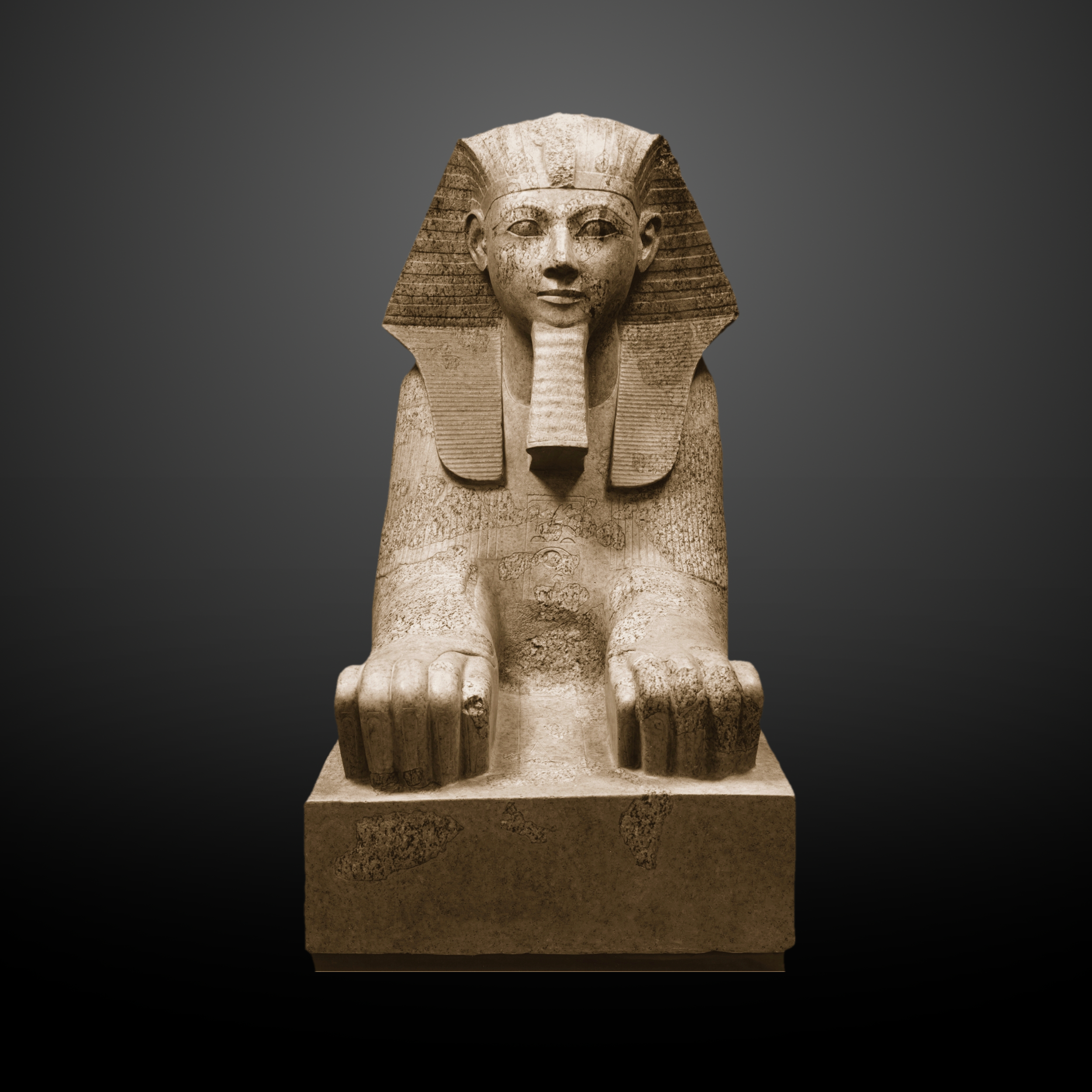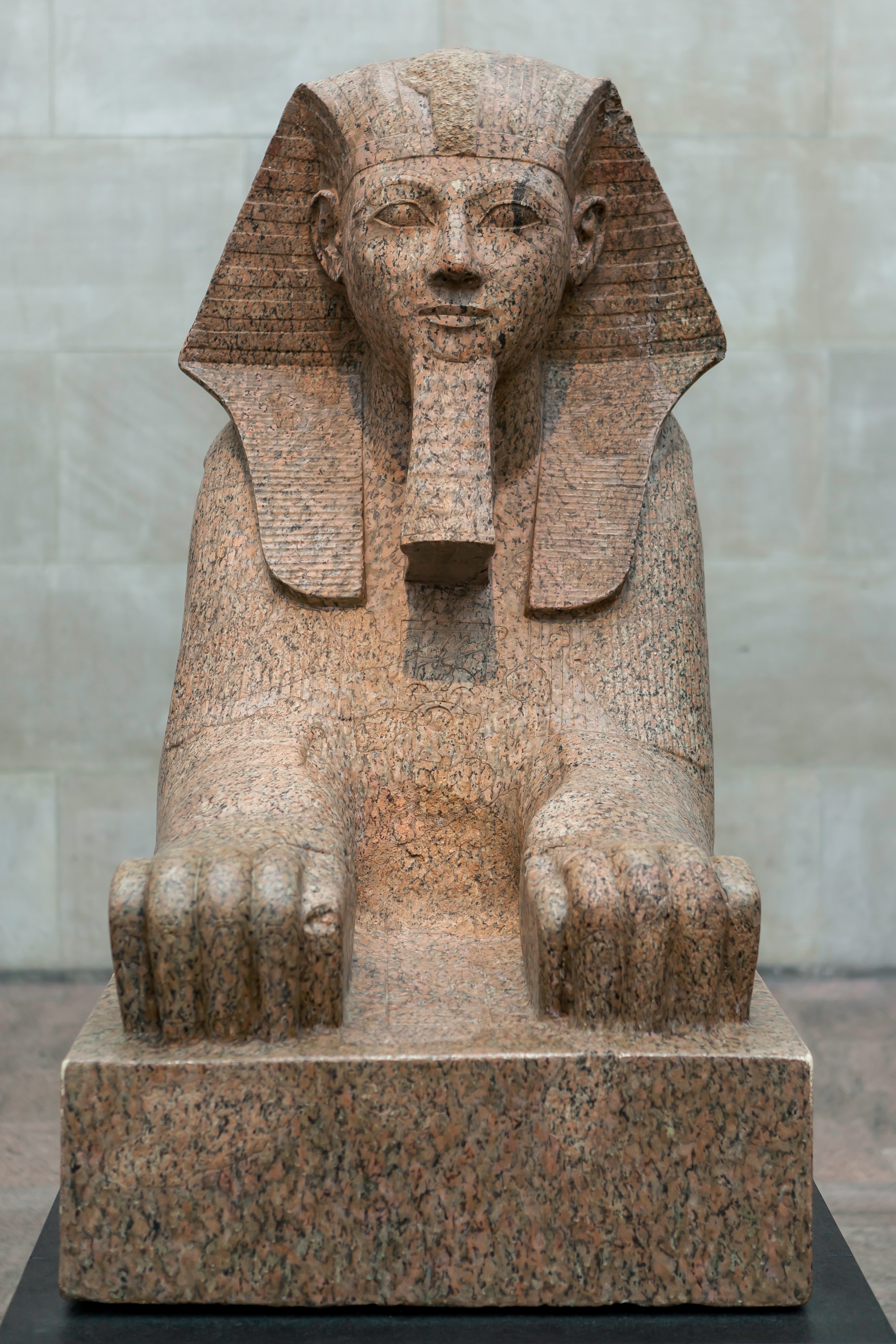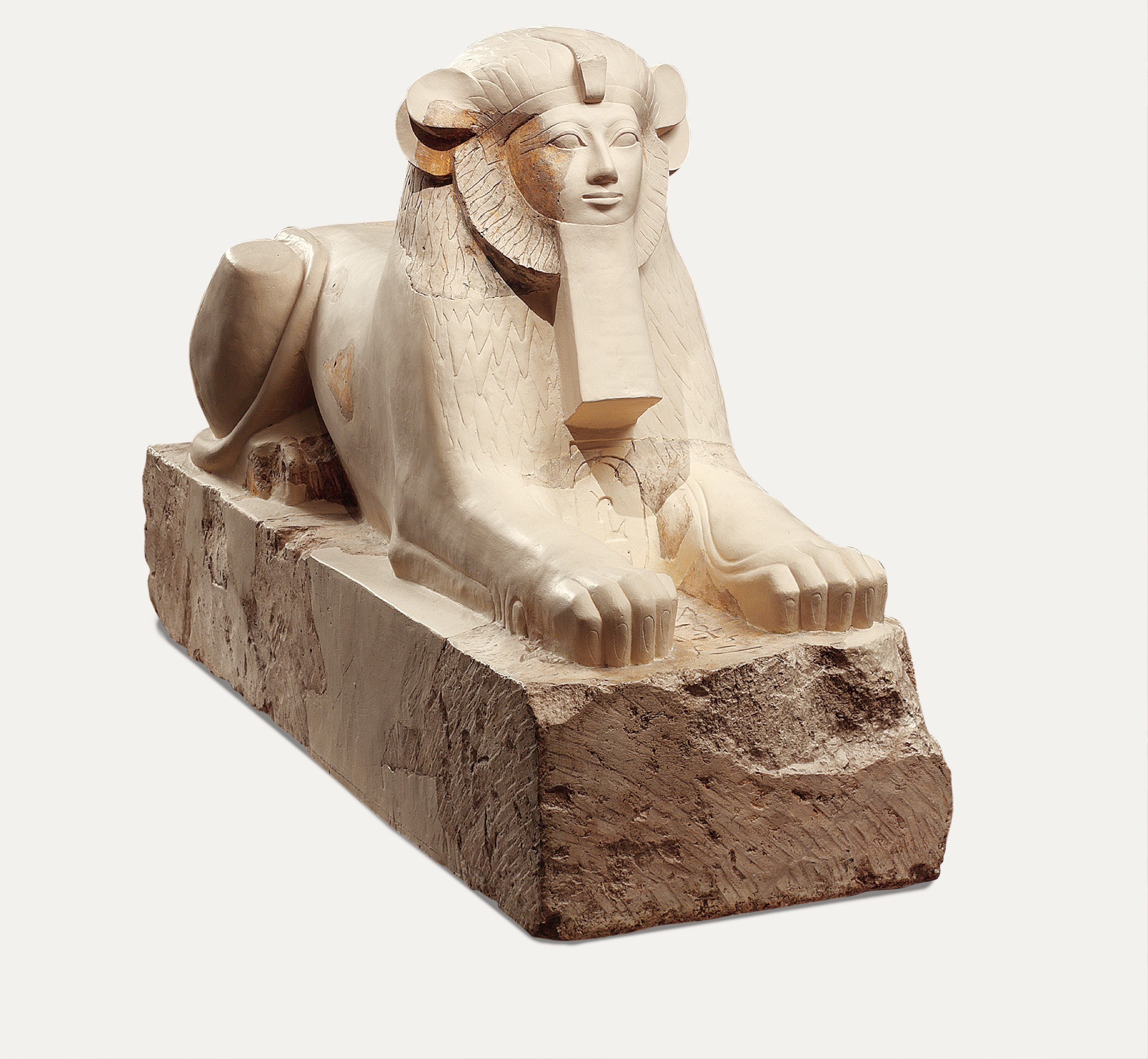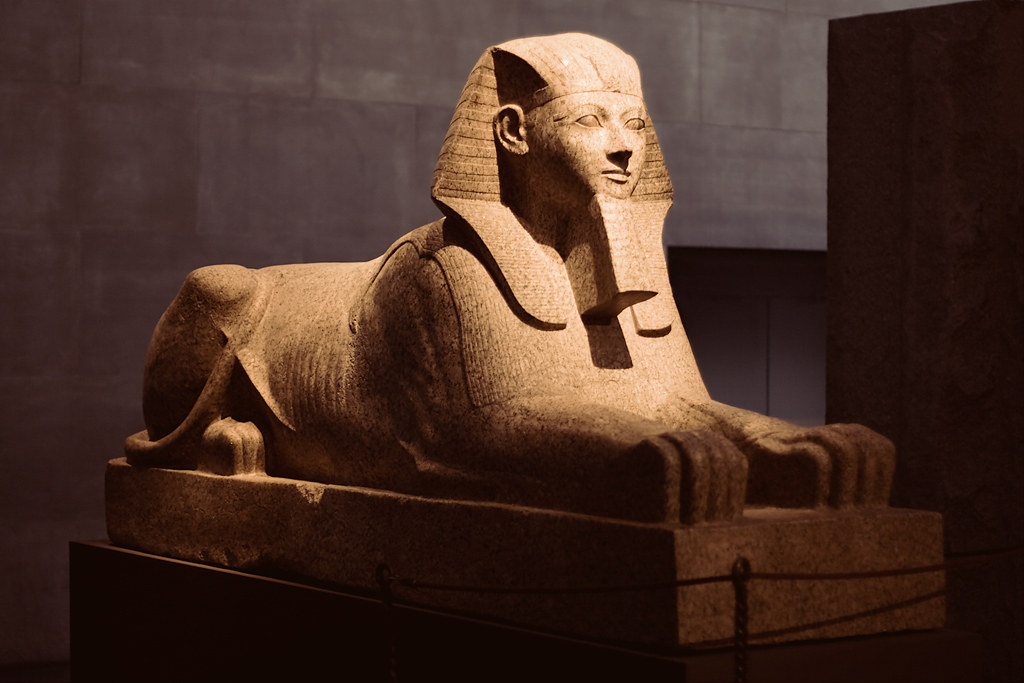This monument depicts the Akkadian victory over the Lullubi Mountain people. The sculpture of the Sphinx of Hatshepsut depicts.

File Sphinx Of Hatshepsut Met 31 3 166 F Gradient Jpg Wikimedia Commons
A female dedicated as a male king In Catherine Opies Melissa Lake Durham North Carolina the depiction of gender is made ambiguous for what reason.

. Carved between the paws of the statue is a cartouche enclosing the pharaohs throne name Maatkare Truth is the Soul of the Sun c. It depicts the queenking as a sphinx with a lions body and a royal portrait head commanding the entire space with grace and grandeur. The sculpture of the Sphinx of Hatshepsut depicts.
It depicts a seated Hatshepsut in female clothing wearing the nemes crown and is inscribed with her pharaonic throne name Maatkare Truth is the Soul of the Sun and feminized versions of her kingly titles Daughter of Re etc. She wears the same ceremonial costume as male pharaohs including a false beard and a striped royal headcloth that was originally painted blue and yellow and featured a symbolic protective cobra known as the. New Kingdom On view at The Met Fifth Avenue in Gallery 115 This graceful life-size statue depicts Hatshepsut in female attire but she wears the nemes headcloth a royal attribute usually reserved for.
14791458 BC is a sculpture of Pharaoh Hatshepsut as a sphinx made of granite that is attached to a rectangular base on the bottom. This sphinx is one of several granite sphinxes that once stood in Hatshepsuts mortuary temple at Deir el-Bahri. A female depicted as a male king.
The sculpture of the Sphinx of Hatshepsut depicts. 1479-1458 BCE the Metropolitan Museum of Art New York. Sphinx of Hatshepsut from ca.
In this sculpture the pharaoh Hatshepsut the first important female ruler known to history is shown as a sphinx a guardian figure with a human head and a lions body. The sculpture of the Sphinx of Hatshepsut depicts. This limestone and plaster piece depicts the female pharaoh Maatkare Hatshepsut as a sphinx.
This seven-ton granite Sphinx of Hatshepsut has the body of a lion and a human head wearing a head-cloth and royal beard. How did the Feminist artists Judy Chicago and the Guerrilla Girls expand the opportunities and subject matter of art to include women and issues relevant to them. In this sculpture the pharaoh Hatshepsut the first important female ruler known to history is shown as a sphinx a guardian figure with a human head and a lions body.
She has the body and mane of a lion with the head of a human. A female depicted as a male king a male pharaoh depicted as a woman King Tut disguised as Nefertiti Hatshepsuts pet Each answer shown is correct a female depicted as a male king Georges Seurats Sunday on La Grande Jatte Calendar stone Sun Stone late postclassic Aztec The Emperor Constantine I. A female depicted as a male king In Catherine Opies Melissa Lake Durham North Carolina the depiction of gender is.
In the 12th century BCE a thousand years after it was originally made the Elamite king Shutruk-Nahhunte attacked Babylon and according to his later inscription the stele was taken to Susa. The Collection Egyptian Art The Female Pharaoh Hatshepsut ca. 1479-1458 BCE the Metropolitan Museum of Art New York.
Measuring 240 feet 73 meters long and 66. The sculpture of the Sphinx of Hatshepsut depicts. By bringing attention to women who had been left out of the history of art.
The sculptor has carefully observed the powerful muscles of the lion as contrasted to the handsome idealized face of the. Carved from seven tons of red granite it is conventionally interpreted as representing the queen herself as a lion-bodied creature with androgynous. The statue has the usual symbolic powerful muscles of the lion and the idealized face used for pharaohs.
The sculpture of the Sphinx of Hatshepsut depicts. Sphinx Of Hatshepsut Illustration World History Encyclopedia. The sculpture of the Sphinx of Hatshepsut depicts.
The sculpture of the Sphinx of Hatshepsut depicts. Granite Sphinx Statue of Hatshepsut Sphinx statues have a long tradition in Egyptian history the earliest examples dating to the Old Kingdom and the most famous being the great sphinx of Giza. A female depicted as a male king There are no artworks that consciously counter stereotypical representations by showing men as vulnerable and women as powerful.
It depicts a seated Hatshepsut in female clothing wearing the nemes crown and is inscribed with her pharaonic throne name Maatkare Truth is the Soul of the Sun and feminized versions of her kingly titles Daughter of Re etc. The Great Sphinx of Giza is a giant 4500-year-old limestone statue situated near the Great Pyramid in Giza Egypt. This is expressed as well in Hatshepsuts funerary tem-ple her greatest visible legacy.
False There are no artworks that consciously counter stereotypical representations by showing men as vulnerable and women as powerful. This odd combination is evident in a red granite piece on display in the Metropolitan Museum of Art in New York. These majestic statues depicting the king with a lions body and a human headface are epitomes of the kings might and visual manifestations of his superhuman powers.

File Sphinx Of Hatshepsut Jpg Wikimedia Commons

Sphinx Of Hatshepsut Illustration World History Encyclopedia

Sphinx Of Hatshepsut New Kingdom The Metropolitan Museum Of Art

File Sphinx Of Hatshepsut Met 31 3 166 F White Jpg Wikimedia Commons

Sphinx Of Hatshepsut From Metmuseum Org This Colossal Sp Flickr

Sphinx Of Hatshepsut New Kingdom The Metropolitan Museum Of Art

Sphinx Of Hatshepsut New Kingdom The Metropolitan Museum Of Art

Sphinx Of Hatshepsut New Kingdom The Metropolitan Museum Of Art
0 comments
Post a Comment